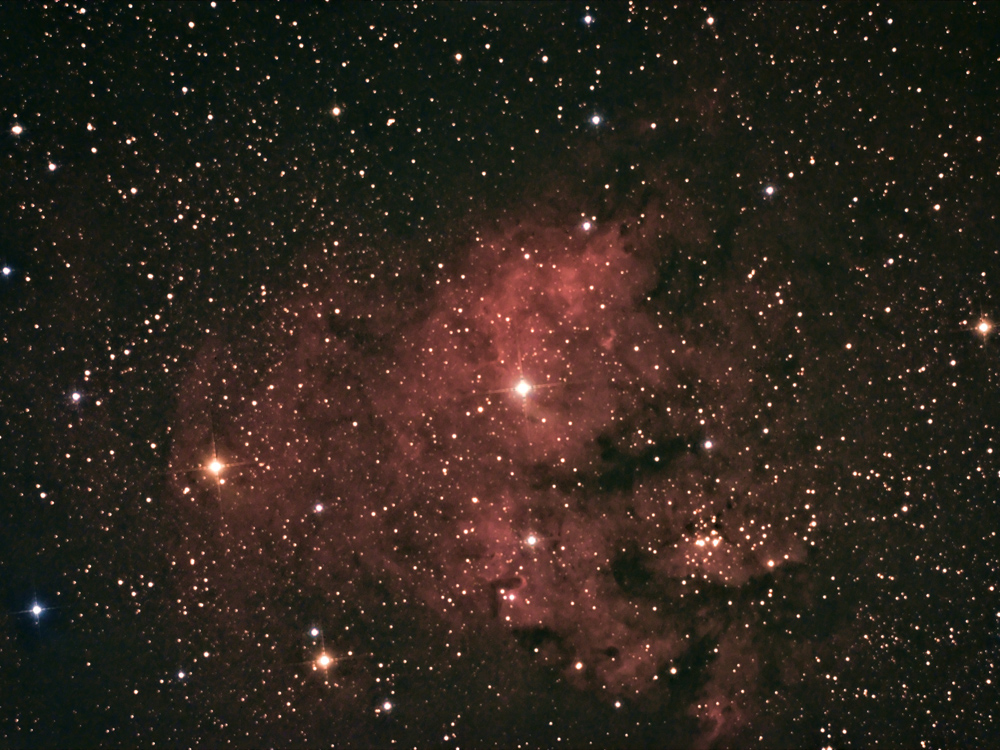
|
La nebulosa CED 214 (SH2-171) The CED 214 nebula (SH2-171) A.R. 00h01m38s - Decl. +67°26'20" |
|
La nebulosa CED 214 (o Sh2-171) è una
nebulosa a emissione posta nella costellazione di Cefeo, proprio
al confine con la costellazione di Cassiopeia. E' una nebulosa a
emissione poco visibile ma di indubbia bellezza in fotografia. A
est è identificabile la più debole nebulosa NGC 7822. L'ammasso in basso a destra della foto è denominato Berk 59. The Calf nebula CED 214 (also known as SH2-171) is a emission nebula in Cepheus, near the boundary with the near constellation of Cassiopeia. It's a emiting nebula not visibile with an amatorial telescope but it's very pretty in photo. On east there is the fainter nebula NGC 7822. On the right bottom you can see the open cluster known as Berk 59. |
|
Questa foto della nebulosa CED 214 (Sh2-171), visibile nella costellazione di
Cefeo,
è stata scattata il 15 agosto 2007 dal Parco Faunistico del
Monte Labro (GR) al
fuoco diretto di un telescopio Vixen R200SS (200 mm F:4) su
montatura Gemini G41 Obs con Fs2. La foto è la somma di 15 esposizioni da 7 minuti cadauna, con una fotocamera digitale Canon Eos 300D con filtro modificato, settato a 800 ISO, che sono state effettuate con inseguimento mediante rifrattore 102/500 in parallelo e autoguida SBIG ST4. Successivamente i frames sono stati sommati con Deep Sky Stacker con sottrazione di dark. E' stato elaborato un segnale di luminanza sintetico usando unicamente il canale rosso mediante stretching, maschera sfocata e riduzione del rumore. Successivamente è stata riunita la componente cromatica, leggermente sfocata, e effettuato il bilanciamento dei livelli. This photo of the CED 214 nebula (Sh2-171), in Cepheus, was taken on august 15, 2007 from the Faunistic Park of Labro Mount, in Italy, near Grosseto, at the prime focus of a Vixen R200SS telescope (200 mm F:4) using a Gemini G41 Obs mount with Fs2. The photo is the sum of 15 frames, each of 7 minutes, with a Dslr camera Canon Eos 300D Rebel (filter modified), exposed at 800 ISO, taken with a Sbig ST4 autoguide on a refractor 102/500. Then I summed the frames with Deep Sky Stacker, subtracting the dark, and processed the synthetic luminance layer (I used the R layer) using a stretching, an unsharp mask, a noise reduction. At last I joined the color (blurred) with the luminance and balance them. |